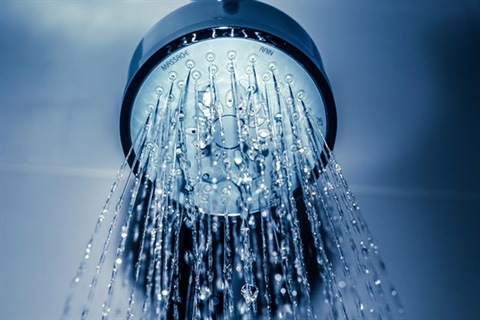Water

Water is a valuable resource. We all need to play our part in reducing the amount of water we use and using it more efficiently. This helps to improve the health of local streams, rivers and bays. It can also support a healthy garden, cool your property on hot summer days, and can even save you money.
Below are some simple tips to help you use water more efficiently around your home and garden:
Reducing Water Demand in Your Home – rainwater, stormwater and greywater
Reducing water use at home
In your home, the appliances and fixtures that use the most water are usually the washing machine, dishwasher, shower and toilet.
You can help reduce water usage and save money on your water bill by:
- Reduce your shower time – aim for 4 minutes or less
- Change to water-efficient shower heads
- Turn taps off when not in use – for example, while brushing your teeth
- Fix leaking taps
- Use the half-flush on the toilet whenever possible
- Scrape excess food from plates and bowls, rather than pre-rinsing
- Only run your dishwasher when it is full
Find more water-saving tips on the Your Home website and learn about the Water Efficiency Labelling and Standards (WELS) scheme.
Rainwater
Rainfall running off your roof during storms is a valuable resource that can be collected and stored for later use on your garden.
Capturing rainwater also reduces the amount of water flowing into the drainage system. This can reduce flooding impacts downstream and minimise damage to local creeks caused by the high amount of runoff generated by hard surfaces (such as roofs, roads and pavement).
To collect rainwater off your roof, you will need rainwater tanks. Find out more below:
Stormwater
Stormwater is rainfall that runs off surfaces during storm events. This includes rainwater, which runs off roofs, but also runoff from various ground surfaces.
When we build houses, driveways, roads and pavements, the hard surfaces generate a lot more runoff compared to soil and plants that allow some water to infiltrate. Excess stormwater runoff is directed into the drainage system and discharged into local waterways. This can cause flooding, transport pollutants, and significantly damage the ecosystems of our creeks, rivers and Port Phillip Bay.
You can design your house and garden to minimise the amount of stormwater runoff generated by your property, and even retain, reuse and infiltrate the water for your own use. There are multiple ways to do this including rainwater tanks, raingardens, infiltration trenches, porous pavement or design of hard surfaces to direct runoff via gravity onto areas of soil and plants (known as passive irrigation).
Minimising the amount of hard surfaces around your house can also allow more stormwater to soak into your soils and garden.
For more information, please see:
Greywater systems
Greywater is wastewater from your bath, bathroom basin, laundry and shower. It does not include water from the kitchen sink or toilet.
A greywater system enables you to reuse greywater for use on your garden, or if properly treated first, to flush your toilet. It is important to follow guidance for the safe reuse of greywater, as it can contain pathogens that pose a risk to human health.
For more information, please see:
Water and gardening
To save water in your garden, consider using indigenous and native plant species which are better adapted to the local climate and more drought-tolerant. Visit Monash Gardens for Wildlife for more information.
More information on sustainable gardening and landscaping ideas can be found on the Federal Government’s Your Home website.